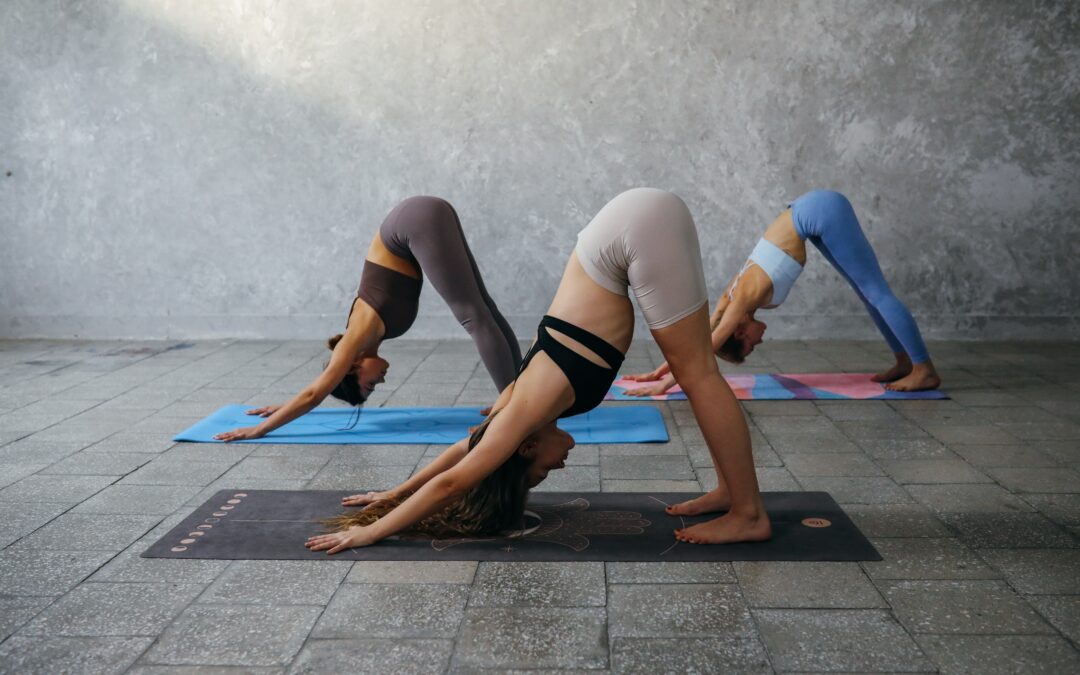Interested in yoga and wondering about the history of this ancient practice? In this blog post, you will read about Hatha Yoga as the system carrying the roots of modern yoga practice. Although your interest may be on one subset within Hatha Yoga, seeing the bigger picture has the potential of bringing further inspirations.
The Meaning of “Hatha”
Modern yogis frequently come across the following translation: “Ha” as “Sun”, “Tha” as moon, Hatha as the path in which these Sun and Moon energies balance. Translating Hatha as such is not contradictory to the philosophy of yoga. The word “yoga” itself translates as “union”, so describing one type of yoga as such is still in line with the philosophy.
However, this approach withholds us from the real translation herewith the essence of Hatha Yoga. In fact, “Hatha” translates as force (Mallinson, 2018) or stubborn (Jain, 2019). In line with the true translation, Hatha Yoga is a perseverant, determined way of practice, a vow as the phrase goes, to stay on the yoga path.
This stubborn practice starts with the physical body. With the suggested methods, one starts to gain control over the body. This process is believed to naturally evolve into control over mind, followed by a transformation in the consciousness which brings a life of harmony and ease. Starting the practice from a more concrete phenomena -body- is maybe the answer to the rising popularity of Hatha Yoga practice in our times. Nowadays, one of the main criteria of success is the observable change one can create in material life with the rise of technology. Therefore, keeping the transition smooth by starting with the body, and gradually moving towards a higher level of consciousness seems fit for our age.
Hatha Yoga Practice
According to Hatha Yoga Pradipika, which is one of the most frequently referred texts, Hatha Yoga system consists of the following elements to attain the ultimate state of consciousness, Samadhi:
- Asana: Practice of the yoga poses
- Pranayama: Breathwork practices
- Shatkarma: 6 practices to purify the body
- Mudra: Gestures of body to direct life force energy
- Bandha: Energy locks to retain different forms of life force energy in the body
Since it is the ultimate destination, understanding Samadhi is also crucial in the yogic path. With a broader definition, Samadhi is the state where illusions about the worldly phenomena including form, time, and space dissolves (Jain, 2019); or with a more relatable definition it is the state where all the conflicts in the mind dissolve (Svatmarama, p. 169).
Origins
According to ancient yoga knowledge, there are 4 different ways to attain freedom from the mind: Raja Yoga, Karma Yoga, Bhakti Yoga, Jnana Yoga. Each of them focuses on different themes and suggests different routes. Karma Yoga points to selfless action, Bhakti Yoga resolves self in the love of the divine, Jnana Yoga suggests self-study.
On the other hand, Patanjali’s 8 Limb Yoga System, and Hatha Yoga belong to the Raja Yoga path, which is a system focusing on self-control (Jain, 2022). It is rather easy to internalize the connection of Raja Yoga and Hatha Yoga. In the modern yoga practice, focus is on changing the relationship with the body, mind, and breath. Modern yogis learn to control these to free them eventually from all the conditioning.
All in all, one can say that, if a yogi is practicing yoga poses, breathwork, and working with perseverance to attain a higher state of consciousness, then she/he is on the path of Hatha Yoga which is included in Raja Yoga.
Although it is not possible to give an exact date for the beginning of yoga, abovementioned text Hatha Yoga Pradipika is believed to be written in the 14th century by a sage called Svatmarama (Svatmarama, p. 7). Patanjali’s Yoga Sutras dates back to 100 B.C.
Would you like to learn more about the history of Hatha Yoga? Check out (Mallinson, 2016):
Asana Practice
As modern yogis’ mostly dwell on asana -yoga pose- practice, origins of postures become another mysterious subject to study. Interestingly, in Yoga Sutras, the only yoga pose that was described is a meditation posture. The later texts like Goraksha Samhita or Gherandha Samhita suggest that there are actually 8.400.000 asanas (Svatmarama, p. 26). Texts after Yoga Sutras, gave the description for different numbers of asanas – 12 asanas in Hatha Yoga Pradipika, 32 asanas in Gherandha Samhita.
In our time, asana practice continues to evolve and change. It certainly gets affected by other exercise forms. Ever so, in a Hatha Yoga asana class, one should experience a more stable form of practice, with a longer hold in every posture. Even though the reference point is subject to change with the evolution of yoga, Hatha Yoga class will be a more serene form of practice with the focus on target areas of yoga poses, rather than the flow.
Being stubborn in the practice
We have learned that Hatha Yoga is a stubborn practice, which requires devotion to the path and daily routines. Our stubborn practice is about staying determined and keeping our connection alive with our core reason to start. Reminding ourselves of this original meaning may help us stay on the path and refocus us when we have a tendency to lose our way when there are distractions!
References
Svatmarama. (2019). Hatha Yoga Pradipika. (B. Ercan, Ed. & Trans.). Okyanus Yayıncılık ve Yapımcılık Ltd. Şti.
Jain, R. (2019, December 12). What is Hatha Yoga & its benefits: Arhanta Yoga Blog. Arhanta Yoga Ashrams. Retrieved January 20, 2023, from https://www.arhantayoga.org/blog/what-is-hatha-yoga-philosophy-and-practice/
Jain, R. (2022, June 6). What is Raja Yoga? Arhanta Yoga Ashrams. Retrieved January 20, 2023, from https://www.arhantayoga.org/blog/raja-yoga/
Mallinson, J. (2016, November 23). The History and Practices of Hatha Yoga with Dr. James Mallinson. YouTube. Retrieved January 20, 2023, from The History and Practices of Hatha Yoga with Dr. James Mallinson
Mallinson, James, “Yoga: Haṭha Yoga”, in: Brill’s Encyclopedia of Hinduism Online, Editor-in-Chief Associate Editors Knut A. Jacobsen, Helene Basu, Angelika Malinar, Vasudha Narayanan. Consulted online on 20 January 2023 <http://dx.doi.org/10.1163/2212-5019_BEH_COM_000354> First published online: 2018


